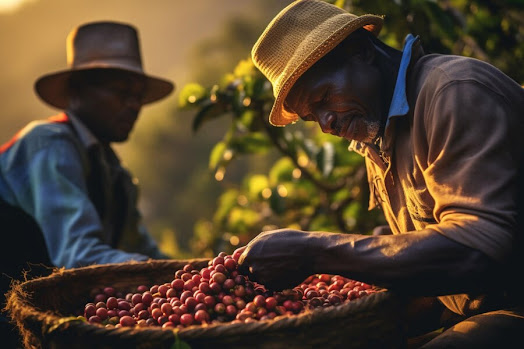The YouTube video explains the process of how Nescafe coffee is made in the Nescafe Factory in Switzerland. The process begins with the harvesting of coffee beans from coffee plants, which takes six to nine months. The beans are then washed, dried, pulped, and cleaned before they are roasted and ground to form soluble coffee. The soluble coffee is packaged and shipped for consumption. The process involves the use of specialized machines and equipment to ensure efficiency and consistency. Additionally, the extraction of coffee flavors and aromas from the roasted and ground beans is done through a process called extraction, which involves mixing the beans with hot water and heating it until it condenses into an extract. The coffee extract undergoes a dry-drying process, which involves removing water through a vacuum called freeze-drying before it is vacuum packed and shipped to supermarket shelves.
- we learn about how Nescafe coffee is made in a factory, specifically the Nescafe Factory located in Switzerland. We discover that the process of producing Nescafe coffee involves multiple stages, from harvesting and processing coffee beans to roasting and blending them. Coffee beans are first harvested from coffee plants once they are fully ripe, and this process usually takes around six to nine months. Harvesters collect the ripe berries while leaving the green ones to ripen further. These berries are then transported to processing plants, where they are first washed and dried before being pulped to separate the outer skin and fruit from the beans. The beans are then further cleaned and roasted before being ground and mixed with other ingredients to form soluble coffee. Finally, the soluble coffee is packaged and distributed for consumption. The entire process is overseen by specialized machines and equipment, which makes the production of Nescafe coffee more efficient and consistent.
- The coffee manufacturing process involves the extraction of coffee flavors and aromas from roasted and ground beans through a process called extraction. The process involves mixing the roasted and ground beans with hot water and heating it until it condenses into an extract, which is then spread on a conveyor belt to the next station. After this, the coffee extract undergoes a dry-drying process, which involves the removal of water through a vacuum, called freeze-drying. The dried coffee granules are then introduced into a sluice and placed in a vacuum chamber before being dried further in a drying chamber. Finally, the coffee powder is filled into jars and vacuum packed to preserve its quality for 24 months before being shipped to supermarket shelves.











![Advertisement [ad]](https://blogger.googleusercontent.com/img/a/AVvXsEjQf9pLW3gEI1cs5Vc6OUVxYIcpNhOfy6zIvYwYuGAlojBxaMUiwV7g0V2T1U5D0NvvJf4fsAy9sCbcTTaRurc3XgO2yfTcGYPb-ABW3tIiyfoLl0aWUEjYibbdeKRibMdfAgXSFBX9FFQ1le1obYxQILeKUk41QtC4QSmgtUFnFv9AKGlIAhUs80xh=s580)

Comments